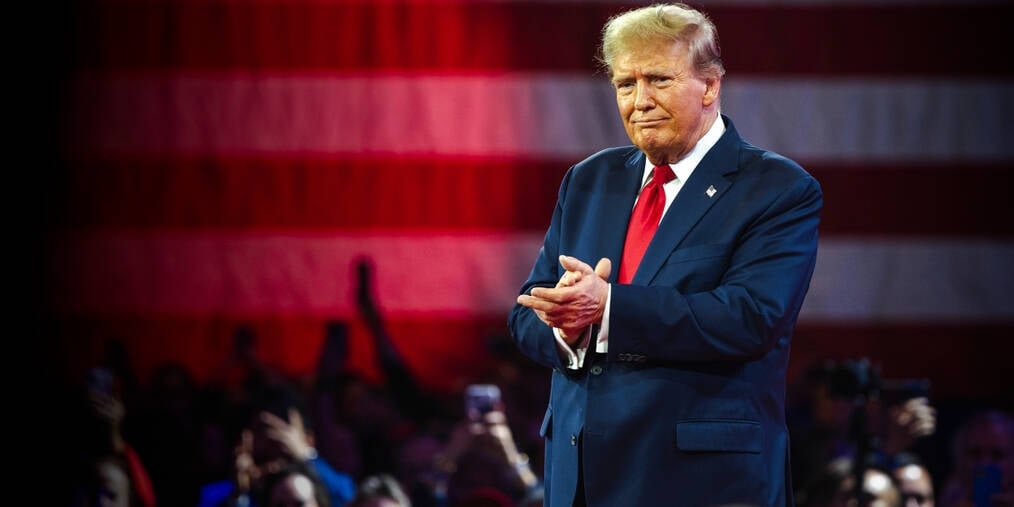BOOK THIS SPACE FOR AD
ARTICLE ADCould Congress require that the secretary of defense, rather than the president alone, approve a nuclear weapons launch? Could it require that a particular Senate-confirmed officer command troops in a certain theater, even if the president would rather have some other officer do the job? Could it bar the president, even in wartime, from removing a top general or admiral without cause, thereby preventing him from selecting someone else to fill the position?
Presidents and commentators have often assumed that such laws, or even more modest measures dictating military structures and functions, would be unconstitutional. In a 2017 letter to Congress, for example, the Trump administration’s Justice Department objected to provisions requiring “manning levels” for certain units, invoking an attorney general opinion from the Buchanan administration as support for doing so. “Presidents have asserted … since at least 1860,” the letter declared, that they may decide, as commander in chief, which military officers will “perform any particular duty.”
In fact, this view is wrong. The correct answer to all of the questions above is yes. As I argue in a forthcoming Texas Law Review article, the Constitution’s text, structure and history, viewed in light of actual governmental practice over the Republic’s two-and-a-quarter centuries, support broad congressional authority to structure the military, assign duties to offices and regulate military chains of command.
These congressional authorities matter. A provision in the fiscal 2020 National Defense Authorization Act requires certifications from the secretary of defense before the president can reduce troop levels in South Korea below a prescribed threshold. Another recent statute requires the National Command Authority—that is, the president and the secretary of defense in combination—to authorize certain offensive cyber operations, rather than the president alone. Other recent controversies, including reported political interference in Navy discipline for SEAL officers and Defense Secretary Mark Esper’s reported refusal to deploy troops for domestic law enforcement, indicate that who exercises certain powers within the government can greatly affect outcomes.
Statutes regulating all of these matters depend on Congress’s authority to structure the military, and at some times in the past Congress has exercised this power more aggressively than it has in current statutes. Congress should consider dusting off this item in its toolkit. In our brave new era of unstable politics and negative partisanship, amid potentially increasing pressures for short-sighted and politically motivated action, this congressional power may be one of the best means of encouraging caution and protecting good-government norms.
Scholars have extensively debated other war powers questions, including the relative authority of the president and Congress with respect to initiating military action. Yet questions about Congress’s power to structure the military have received less attention in recent work. Indeed, even scholars who take a broad view of Congress’s power to regulate military operations have sometimes presumed that the executive branch must be “unitary” when it comes to the military, meaning that the president must have authority to personally control how military functions are performed. My article qualifies that view, arguing that although presidents must have authority to issue lawful commands to the military, Congress holds extensive power to structure the military apparatus through which those commands are discharged—and that this structuring power may have great practical significance.
In this brief post, I’ll summarize the argument for this understanding of Congress’s powers, beginning with the Constitution’s text and structure and then turning to current and historical examples. I’ll return at the end to the practical consequences that follow from this view.
Constitutional Text, Structure and History
What does the Constitution say about military officers? Article II of the Constitution, of course, makes the president “Commander in Chief of the Army and Navy of the United States.” But Article I gives Congress the power to “declare War,” “raise and support Armies,” “provide and maintain a Navy,” and provide for calling state militias into federal service. It also empowers Congress to “make Rules for the Government and Regulation of the land and naval Forces.”
More generally, the Constitution’s Appointments Clause requires that all “Officers of the United States” be appointed by the president with the Senate’s advice and consent (or in some cases by the president alone or the head of a department). Yet Congress holds authority to create (or abolish) offices in the first place, and the Necessary and Proper Clause empowers it to pass laws “necessary and proper for carrying into Execution” all the federal government’s powers.
By their plain terms, these provisions give Congress broad power to structure military responsibilities and chains of command. The president generally must appoint officers, and he or she serves as their ultimate commander. But Congress may assign duties to particular officers, or require that the military operate through prescribed chains of command. Such laws are “Rules for the Government and Regulation” of the military. They are also measures “necessary and proper” to carrying presidential command authorities into execution. Indeed, the very term “Commander in Chief” implies that presidents will normally exercise military power only through other officials subject to their ultimate command.
Similarly, although the Constitution might well imply a default rule that presidents may fire military officers, the text of the Constitution does not necessarily require that presidents hold such authority. On the contrary, so long as the president has some means of ensuring compliance with lawful commands—the power to prosecute officers for disobedience, for example—granting job security to military officers does not displace the president’s power as commander in chief.
In short, to quote a Supreme Court decision from 1983, “It is clear that the Constitution contemplated that the Legislative Branch have plenary control over rights, duties, and responsibilities in the framework of the Military Establishment.”
Current and Historical Examples
Current and historical governmental practice reinforces this view.
Today, numerous statutes vest particular responsibilities in particular officers. The chairman of the Joint Chiefs of Staff, for example, is the president’s “principal military adviser” but is barred from exercising actual military command over U.S. forces. Statutes vest particular responsibilities in the Army, Navy, and Air Force’s judge advocate generals, as well as in the various under secretaries of defense and the combatant commanders. Another statute precludes military officers from “hold[ing], or exercis[ing] the functions of, [certain] civil office[s] in the Government of the United States.” Yet another generally prevents the secretary of defense from “substantially transferr[ing], reassign[ing], consolidat[ing], or abolish[ing]” duties and authorities vested by law in particular Department of Defense positions.
Some officers’ functions are protected from any control by superior officers. Officers serving on courts martial are insulated from command influence or retaliation, as are judge advocates general. Judges on the Court of Appeals for the Armed Forces are removable only for cause during their 15-year terms. Commanders likewise may not influence or retaliate for officers’ choices when serving on selection boards that recommend junior officers for promotion.
Across the board, furthermore, applicable statutes going back to 1865 generally preclude firing military officers without cause during peacetime. Accordingly, although presidents or other commanders often may relieve subordinates of particular duties, they may not remove them from the service altogether without cause.
All of these current statutes, just like the recent enactment conditioning force withdrawals in South Korea on certifications by the defense secretary, presume congressional authority to vest particular functions in particular offices and regulate command relationships. Yet historically Congress exercised these powers still more aggressively.
During the Mexican-American War, Congress refused to let President Polk appoint an officer superior to the existing major generals, thus leaving Polk to lament in his diary that “I am held responsible for the War, and yet I am required to entrust the chief command of the army to a Gen’l in whom I have no confidence.”
During the Civil War, Congress passed numerous statutes organizing and reorganizing the Union’s military. Then during Reconstruction, amid intense conflicts between Congress and President Andrew Johnson over policy toward the defeated Confederacy, Congress passed a law requiring that all army orders be issued through the general of the Army, who at the time was former Union commander and future President Ulysses Grant.
Congress also vested specific occupation powers in “district commanders” with responsibility for particular regions of the defeated South. Gen. Grant took the position that these laws made the “District Commanders … responsible for the faithful execution of” reconstruction statutes, meaning that in these matters even Grant could not “give them an order.” At least one district commander, Civil War hero Philip Sheridan, exercised his authority to remove Texas’s governor in defiance of President Johnson’s wishes. Sheridan thus prompted Johnson to fire him—but elevated the political cost to Johnson of getting his way.
Congress continued to dictate significant aspects of the military’s structure throughout much of the 20th century. During the two world wars, Congress passed laws giving the president authority to reassign duties and functions among officers within the executive branch—precisely the authority some presidents have since claimed to possess as a matter of commander-in-chief prerogative—but these laws expired six months after each war’s conclusion.
After World War II, in the National Security Act of 1947, Congress combined the previously separate Navy and War Departments into what is now the Department of Defense. It then made further changes, culminating in the Goldwater-Nichols Act of 1986, which authorized the president, acting through the secretary of de
[…]
.png)















 Bengali (Bangladesh) ·
Bengali (Bangladesh) ·  English (United States) ·
English (United States) ·